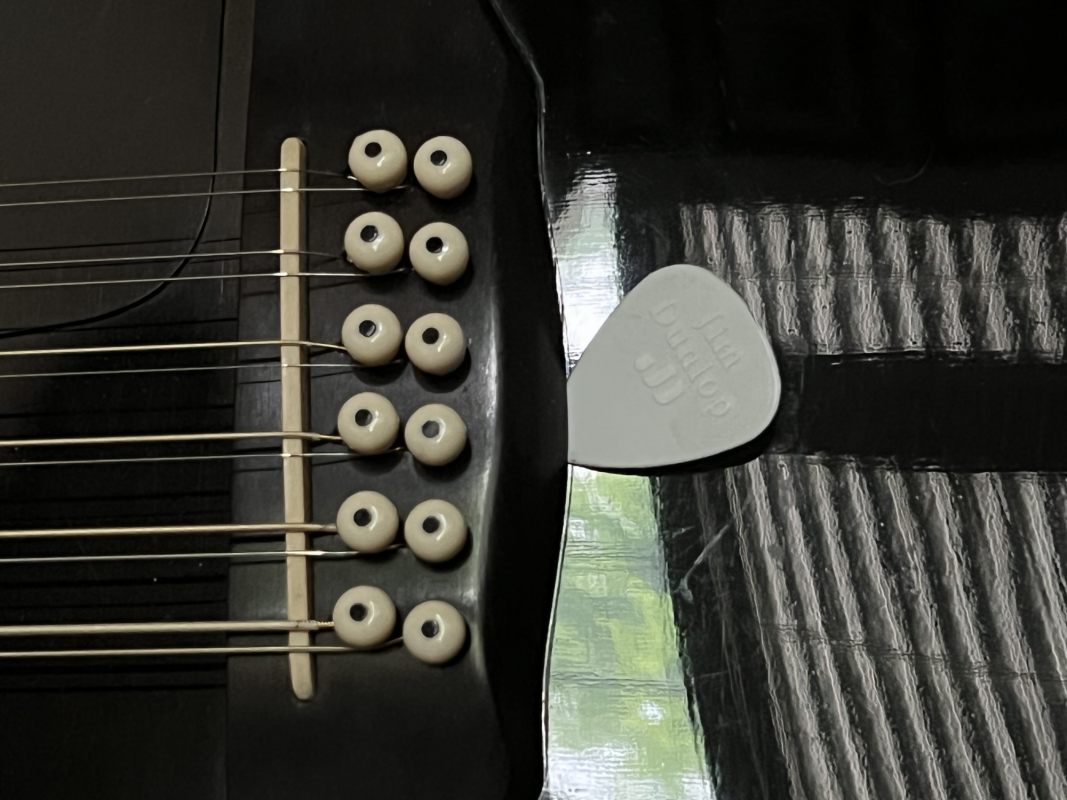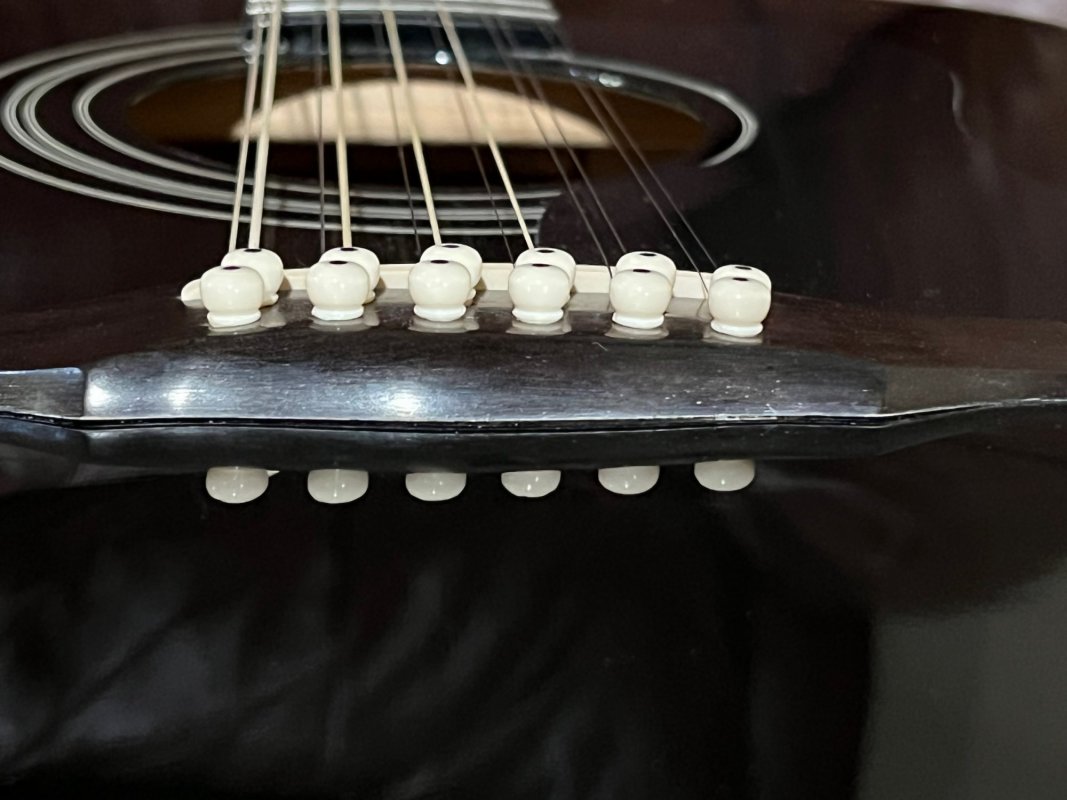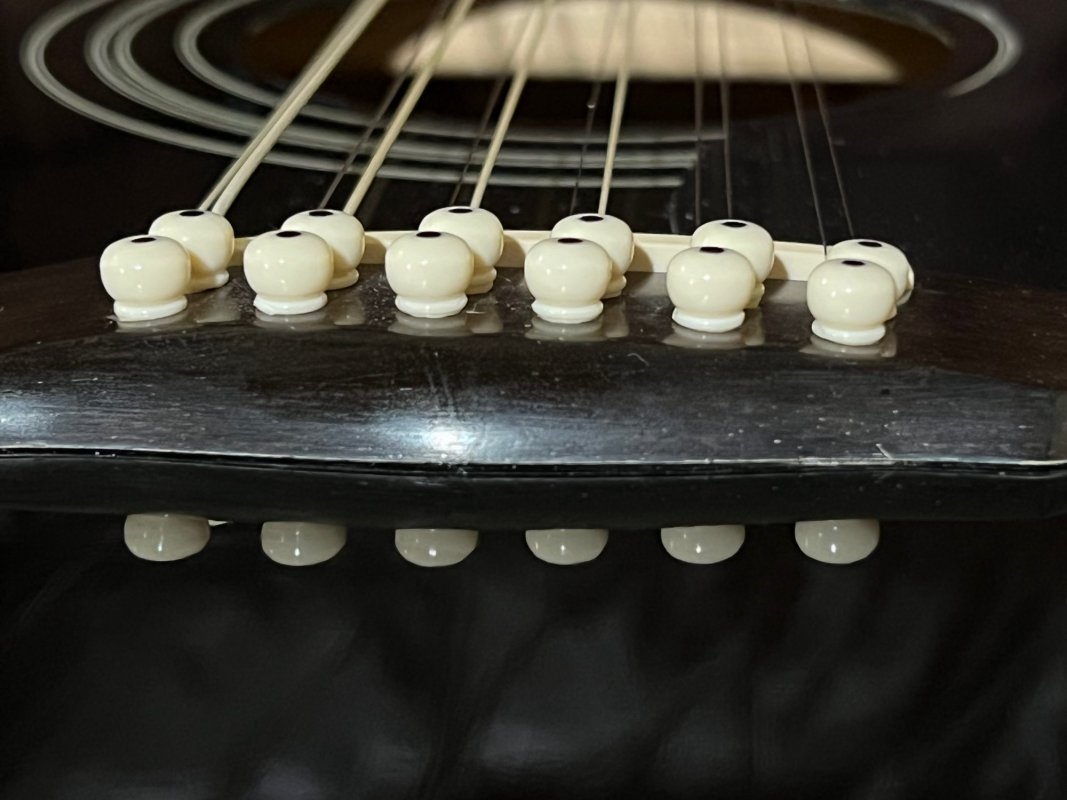Mr.Bluesky
Junior Member
- Joined
- Apr 14, 2021
- Messages
- 21
- Reaction score
- 14
- Guild Total
- 3
I have a JF30-12 I purchased circa 1999 and it is one of my favorite instruments ever. I leave it de-tuned when not in active use and I noticed recently the bridge is elevating from the top at the bottom of the bridge. I understand this is not uncommon but I am wrestling with what to do next. I have read from some who suggested repairing it immediately while others seem to suggest to leave it alone and only repair if it actually comes off as the repair can sometimes impact the finish etc.
I have no plans to ever sell it and am inclined to get it repaired. I have reached out to Guild directly to see if this is something covered under the warranty as I am the original owner or if it is something they can repair.
I appreciate any thoughts or considerations as I explore my options.
I have attached a file showing the elevated bridge.
TIA - Todd
I have no plans to ever sell it and am inclined to get it repaired. I have reached out to Guild directly to see if this is something covered under the warranty as I am the original owner or if it is something they can repair.
I appreciate any thoughts or considerations as I explore my options.
I have attached a file showing the elevated bridge.
TIA - Todd


